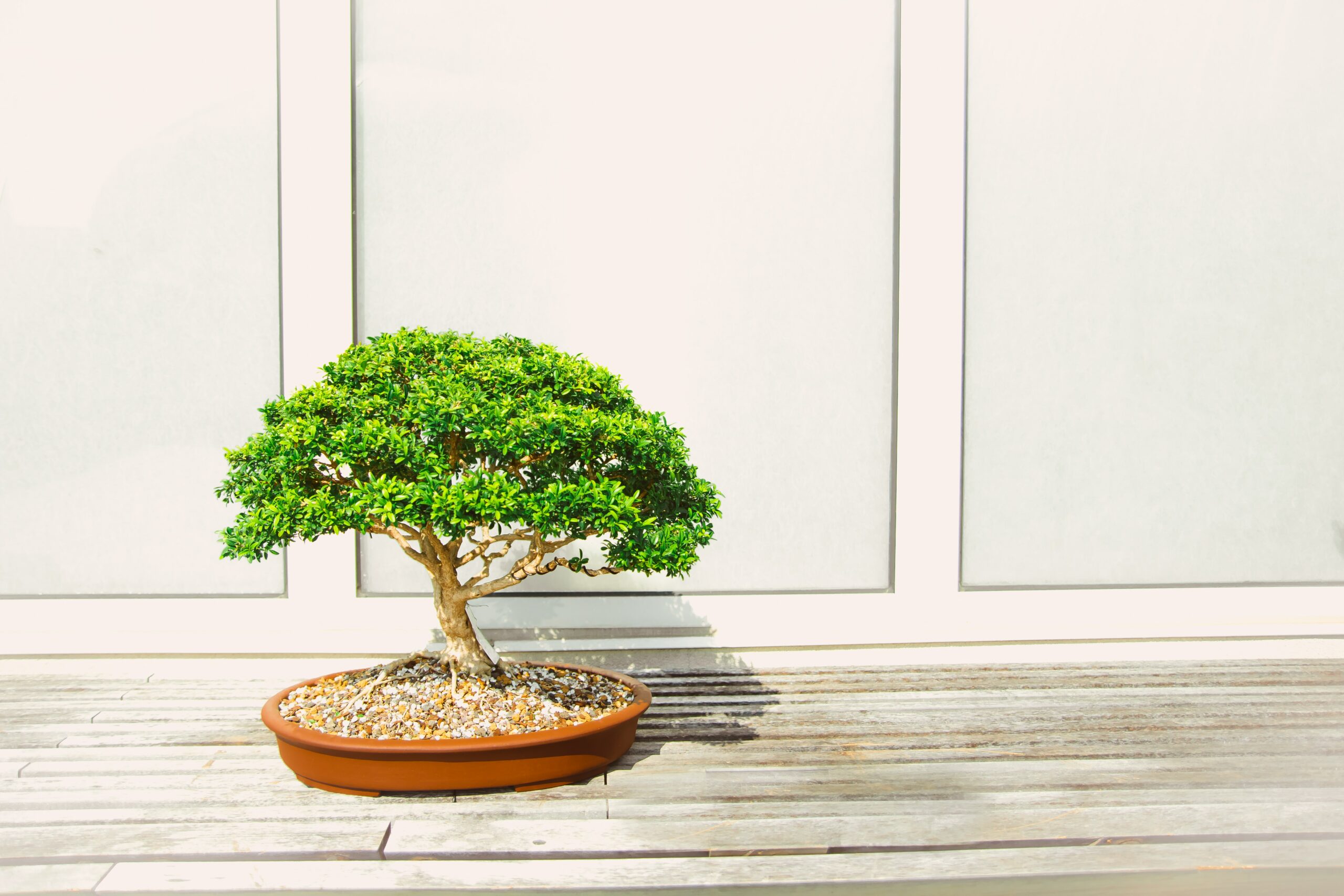Date of the last update: 19.02.2024
The bonsai tree is so popular because of its unique combination of aesthetics, symbolism, tradition and opportunities for personal growth. Its beauty and precisely formed shapes attract attention, creating an impression of harmony and balance. In addition, growing bonsai requires patience and commitment, allowing the grower to develop in the areas of precision, creativity and the ability to convey nature in miniature. This combination of aesthetics, symbolism and opportunities for personal growth is what makes the bonsai tree so popular around the world.
Table of contents:
- What does a bonsai tree mean?
- How much does an original bonsai tree cost?
- How to take care of a bonsai tree?
- The most common mistakes when growing a bonsai tree
- Summary
You can read this article in 3 minutes.
What does a bonsai tree mean?
Bonsai is the Japanese art of growing miniature trees in containers. The word “bonsai” literally means “plant in a bowl” or “tree in a pot.” Growing bonsai requires patience, precision and the ability to shape the tree in just the right way.
Discover more: How to make a forest in a jar? A practical guide
How much does an original bonsai tree cost?
The price of an original bonsai tree can vary widely depending on many factors, such as the species of tree, age, size, quality, rarity and availability on the market. Prices can range from a few tens of zlotys to hundreds or even thousands of zlotys for more exclusive and carefully cared for bonsai trees.
However, it is worth remembering that growing and maintaining a bonsai tree requires time, skill, patience and also an appropriate financial contribution. Genuine bonsai trees of high quality, older, well-formed and fully developed are usually more expensive than younger, shallower bonsai trees.
Check out also: Hortitherapy – What Is It and How to Become a Hortitherapist
How to take care of a bonsai tree?
- Placement: A bonsai tree needs proper placement. There are two key considerations for proper placement: distinguishing between indoor and outdoor growing, as well as providing adequate sunlight. Most species of bonsai trees grow better outdoors, but there are also varieties that grow best indoors. Make sure you place your bonsai tree in the right environment.
- Watering: The most important part of caring for a bonsai tree is proper watering. The frequency of watering depends on many factors, such as the tree species, tree size, pot size, season, soil mix and climate. It is important to maintain a balance between under-watering and over-watering. Before watering, make sure the soil is dry on top, but moist deep inside. Water the tree gently to avoid getting it wet.
- Fertilization: To maintain a healthy bonsai tree, regular fertilization is essential. Choose the right fertilizer for your bonsai tree and apply it according to the instructions. Fertilization should take place during periods of active growth, usually from spring to fall, and should be tailored to the needs of the specific species of bonsai tree.
- Repotting: a bonsai tree should be repotted every few years to maintain a healthy root system. Choose a suitable pot and soil, and then carefully repot the tree. Repotting helps improve drainage, refresh the soil and rearrange the roots, which is important for healthy tree growth[4].
The most common mistakes when growing a bonsai tree
Growing a bonsai tree can be extremely rewarding, but also challenging. Unfortunately, many beginning growers make some common mistakes that can negatively affect the health and growth of their bonsai trees.
The first common mistake is over- or under-watering – inadequate watering can lead to root rot or withering of the plant. Another common problem is lack of adequate sunlight – bonsai trees need the right amount of light, and too little or too much sunlight can negatively affect their condition.
Pruning is also an important aspect of bonsai growing, but improper pruning can weaken the plant and cripple its growth. Another common mistake is inadequate drainage or the wrong soil mix, which can lead to root rot and water imbalance.
Finally, many times bonsai growers struggle with pest and disease attacks that can cause damage and weaken their trees. It is important that you familiarize yourself with these common mistakes and learn how to avoid them so that your bonsai tree can grow and flourish to its full potential.
Explore more: Top Tips for Creating a Restorative Environment at Home
Summary
A bonsai tree requires a lot of work. However, growing it can bring many health benefits. Caring for a bonsai is not only a physical activity, but also therapy for the mind. Watching a tree grow and develop, focusing on precise pruning and shaping, and enjoying the satisfaction of creating beauty and harmony, can bring feelings of solace, reduce stress and tension. The process of growing bonsai also requires patience, which can help develop concentration and mindfulness skills. In addition, bonsai is also associated with the Japanese philosophy of wabi-sabi, which promotes acceptance of imperfection and enjoying the moment, which can help increase balance and contentment in our lives. A bonsai tree thus becomes not only an ornament, but also a source of peace, harmony and relaxation for our mental health.

